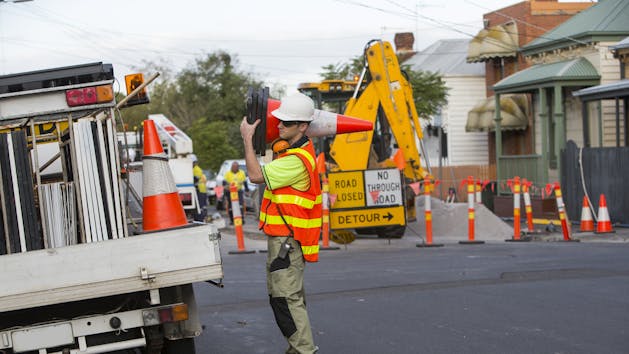Find the right solution for your business with our free Fleet Management Buyer’s Guide.
Optimizing Fleet Size and Utilization
Today'۪s managers constantly strive to cut costs and operate more efficiently. This is especially true for public agency fleets that must comply with increasingly restrictive government mandates regarding fleet size and utilization. A GPS fleet tracking system can help you make significant improvements in three important areas.
1. Route vehicles more efficiently.
By continually monitoring every vehicle'۪s location, a wireless fleet management system provides multiple data points to improve vehicle routing. In addition to location, these data points include vehicle stops, idling, mileage, individual driving patterns, and other important fleet management data.
To route vehicles more efficiently, you can:
- View a near real-time, comprehensive map of all current vehicle locations and their status.
- Use the closest vehicle function to specify an address and locate the closest vehicle.
- Route a specific vehicle to the next job.
- Review up to a full year of vehicle location history online.
- Track weekly mileage to ensure that total miles traveled are declining.
- Monitor mileage trends with various easy-to-run reports.
Using a telematics solution to review vehicle activity can determine when and where fleet vehicles can be shared by multiple workers, reducing total miles driven and fuel costs.
2. Set geofences to restrict unauthorized vehicle use.
To help reduce unauthorized vehicle usage, a wireless fleet management system lets you to place geofences imaginary boundaries around designated geographical areas and track fleet vehicles as they move in and out of those areas.
These systems also provide a number of tools to assist with this task. For example, a Geofence Activity Alert automatically notifies you when a geofence violation occurs, allowing you to take immediate action. The Geofence Violations report provides a detailed history of when vehicles entered and exited established geofence areas. It also tracks the amount of time each vehicle spent within the designated area. When drivers know their vehicle usage is being regularly monitored, unauthorized vehicle usage significantly declines.
3. Replace older and non-essential vehicles.
Government fleets often keep older and non-essential vehicles as backups, thereby creating a larger fleet and adding to maintenance costs. With a wireless fleet management system, you can easily analyze annual vehicle utilization by model and by year. This analysis often reveals that older vehicles are used inefficiently, making them candidates for elimination to reduce overall fleet size.
A GPS telematics solution also makes it easy to analyze maintenance issues, such as highest breakdown rates and highest repair costs by vehicle make and model. This way, you can determine which vehicles would be most advantageous to sell or replace in order to control fleet size and performance.
Optimizing fleet size and improving vehicle utilization with a wireless vehicle tracking system can keep you on the road to managing a leaner, more efficient fleet.
Find out how our platform gives you the visibility you need to get more done.




